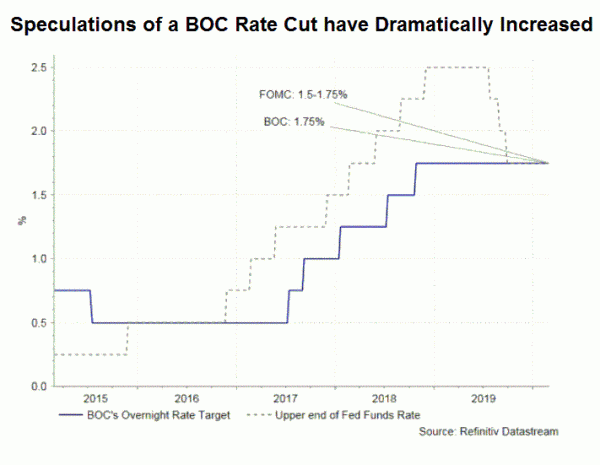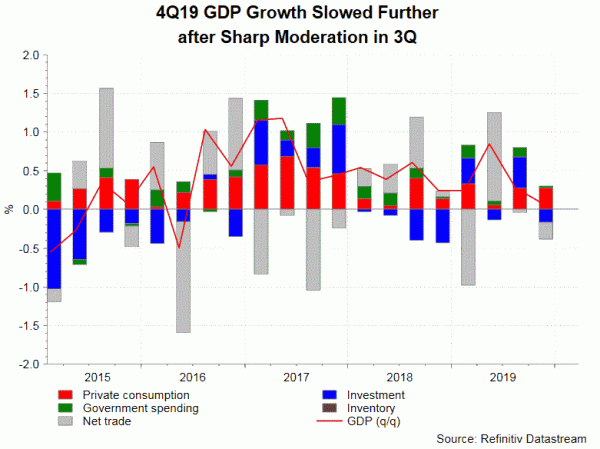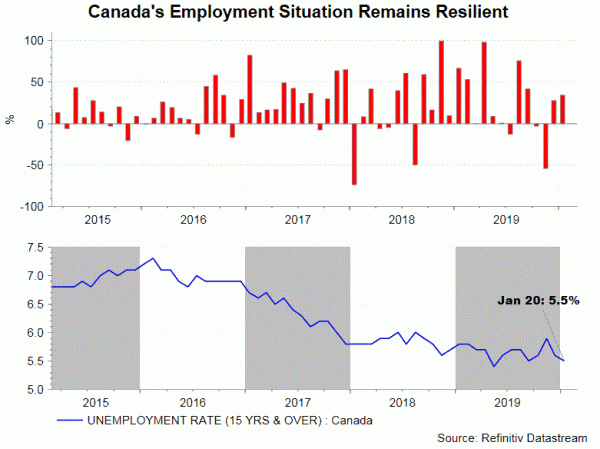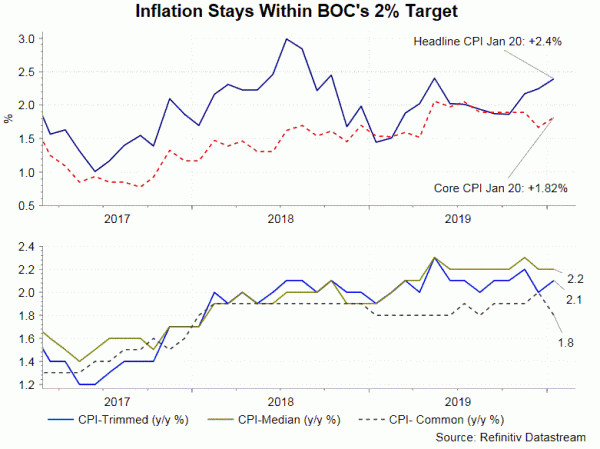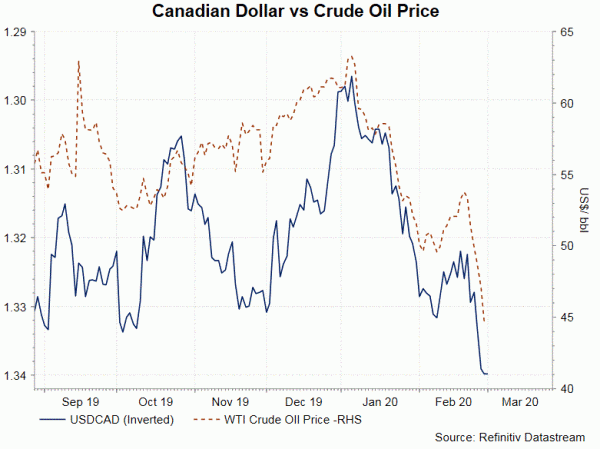The market has priced in a 60% chance of a BOC rate cut this week, up from virtually 0% two weeks ago. While moderation in domestic growth has suggested that further easing is likely, the coronavirus outbreak and its impact have the potential to push forward the rate cut schedule. Further easing is likely given the fact that the Fed could aggressively lower the Fed funds rate by -25 bps in less than 3 weeks’ time, while other central bank would step up monetary stimulus measures. The size of further easing also depends on how soon the epidemic can be contained. Even if BOC stays put this month and leave the policy rate at 1.75%, it will inevitably intensified the dovish tone and hint about a rate cut soon.
Domestically, economic activities have shown signs of losing momentum. GDP growth slowed to a mediocre +0.1% q/q in 4Q19, from +0.3% previously. The annualized growth rate moderated to +0.3% from +1.3%. Household consumption weakened. Retail sales were flat in December despite holiday effect, compared with +1.1% growth in November. Inflation remained strong, though. Headline CPI accelerated to +2.4% y/y in January, beating consensus of +2.3% and December’s +2.2%. Core CPI climbed higher, by one percentage point, to +1.8% y/y. While easing a tad, the average of BOC’s inflation gauges stayed above the 2% target (at 2.03%). On the job market, the unemployment rate slipped -0.1 percentage point to 5.55 in January. Full-time employment rose +35.7K while part-time jobs slipped -1.2K.
Despite temporary relief after conclusion of US-China Phase I trade deal, the market has returned to risk-averse mode. The coronavirus originated from China has evolved into a pandemic with over 70 countries or territories affected. As the world’s factory, the severity of the outbreak in China has disrupted the global supply chain. Canada is doomed to be affected with China being third largest trading partner.
Recent selloff of oil price due to concerns about global economic contraction has weakened the loonie. The front-month WTI crude oil price has plunged -13% in February, while the Western Canadian Select (WCS) oil price has dived over -18% during the month. Canadian dollar declined -4.7% against USD last month, given the importance of oil exports to Canada’s economy.
After receiving a disastrous PMI report for China, Canada’s PMI rose to 51.8 from 50.6 in February. Production volumes expanded at fastest pace for three months while there was renewed gain in export sales helps to lift order books. However, Canada is not exempted from the Chinese effect. The report showed the sharpest lengthening of average lead times from suppliers for 12 months. Both rail transport blockades and delays with the receipt of items sourced from suppliers in China were the reasons.




